NAPSNet Special Report
by Desmond Ball and Richard Tanter
6 August 2015
The full PDF version of this report is available here [5.3 MB].
The high resolution PDF is available here [24.4 MB].
I. Introduction
This is a study of Japan’s ground-based signals intelligence (SIGINT) stations, the 17 (soon to be 19) major facilities that intercept, monitor, collect, process and analyse foreign electronic signals. Official statements convey nothing of the scale or detail of the Japanese SIGINT effort, which is probably the third or fourth largest SIGINT establishment in the world. These Japanese ground signals interception and location facilities are integrated with its air and missile defence radar facilities. Together with Japan’s own long-range underwater surveillance systems, and combined with the Japan-based US parallel air, ground and underwater surveillance systems, they take Japan a very long way towards its stated aim to ensure information supremacy in the region. As potentially lucrative targets in the event of war, destruction of these important but vulnerable facilities could alter escalation dynamics in such a way that the widespread assumption that a Japan-China armed conflict could be controlled before substantial escalation may not hold true.
This report is a visual guide, hopefully making it easier for those who come after us to identify what they are seeing. Similar and comparable systems are critical to the strategic planning of all countries with substantial military capacities – or ambitions. Accordingly an understanding of the Japanese ground stations, their physical characteristics, and the logic of their deployment may be of use in understanding non-Japanese systems.
Desmond Ball is Emeritus Professor at the Australian National University (ANU). He was a Special Professor at the ANU’s Strategic and Defence Studies Centre from 1987 to 2013, and he served as Head of the Centre from 1984 to 1991.
Richard Tanter is Senior Research Associate at the Nautilus Institute and Honorary Professor in the School of Political and Social Sciences at the University of Melbourne.
The views expressed in this report do not necessarily reflect the official policy or position of the Nautilus Institute. Readers should note that Nautilus seeks a diversity of views and opinions on significant topics in order to identify common ground.
Note that the authors’ high resolution photographs used in the plates will be available in the Nautilus photostream on the Panoramio website with geolocation in due course.
II. Special Report
Table 1. Japan’s Signals Intelligence (SIGINT) Ground Stations
| Site | Location | Units | History | |
| 1. |
Wakkanai [稚内], Hokkaido |
45.439819°141.650714° | JASDF Air Intelligence Collection Unit No. 1.JGSDF 301 Coastal Surveillance Unit.JGSDF 2nd Defence Intelligence Division Detachment.JMSDF Detachment. | Former US station, transferred to the Chobetsu in 1972.JGSDF station established in 1955.Organisationally a detachment of the Higashi Chitose station.Monitored shooting down of KAL 007 on 31 August 1983.US AN/FLR-12 panoramic data collection system installed in 1965-66.JGSDF 301 Coastal Surveillance Unit maintained a 36-element HF DF CDAA from1988 to 2009.New 7-element HF DF array constructed in 2009. |
| 2. | Maruyama, Cape Soya [丸山, |
45.485854°141.929935° | Detachments from Wakkanai:JGSDF 301 Coastal Surveillance Unit; andJASDF Air Intelligence Collection Unit No. 1. | Established on 1 November 1981. |
| 3. | Rebun Island [礼文島], Hokkaido |
45.436743°141.052006° | Detachment of JGSDF 301 Coastal Surveillance Unit at Wakkanai. | |
| 4. | Shibetsu
[標津], Hokkaido |
43.694627°144.928807° | JGSDF 302 Coastal Surveillance Unit. | Main operations base is at Kawakita, 19 km west of Shibetsu.Also maintains facilities at Rausu and Nemuro. |
| 5. | Rausu[羅臼],Hokkaido | 44.014788°145.184066° | Detachment of JGSDF 302 Coastal Surveillance Unit at Shibetsu. | |
| 6. | Higashi Nemuro [東根室], Hokkaido |
43.314186°145.599200° | JGSDF Detachment from Higashi Chitose. | |
| 7. | Nemuro
[根室], Hokkaido |
43.337604°, 145.616034° | JASDF Air Intelligence Collection Unit No. 2.JGSDF 302 Coastal Surveillance Unit. | J/FLR-2 panoramic data collection system installed in the 1980s.JGSDF 302 Coastal Surveillance Unit facility established in 1993.JGSDF 302 Coastal Surveillance Unit maintained a 36-element CDAA at Higashi Nemuro (43.308528°, 145.600522°) from 1991-92 to 2011.New 7-element HF DF array constructed in 2010 (43.341843°, 145.610275°). |
| 8. | Higashi Chitose [東千歳], Hokkaido |
42.856210° 141.723204° | DIH | Former US station, transferred to the Chobetsu in 1971.Wullenweber CDAA, identical to Miho, installed in 1987.Smaller 8-element CDAA installed by 2009.Monitors Russian signals.Four Satcom radomes for monitoring Russian communications satellites (COMSATs). |
| 9. | Okushiri Island [奥尻島], Hokkaido |
42.1536409°139.434587° | JGSDF Detachment from Higashi Chitose.JASDF Air Intelligence Collection Unit No. 3. | Plans for construction announced in December 1983.Became fully operational in May 1990. Expanded in 1991-93.Designed to monitor communications in the Russian Far East.J/FLR-3 panoramic data collection system, with two antenna-bearing towers and 11 radomes. |
| 10. | Kobunato
[小舟渡], Niigata Prefecture |
37.965836°139.317417° | DIH | Monitors Russian Far East.36-element CDAA installed in 1988. Replaced by a new 7-element HF DF array in 2009. |
| 11. | Miho [美保],Tottori Prefecture | 35.509959°133.224635° | DIH | Monitors North Korean signals.Wullenweber CDAA, identical to Higashi Chitose, operational in December 1977.Ancillary COMINT unit at Takao-yama reported in 1998. |
| 12. | Ooi
[大井], Saitama Prefecture |
35.855727°139.485426° | DIH | Established in 1953.Two large radomes (about 20-m diameters) installed in the 1990s.Third large radome (about 30-m diameter) installed in 2008-09.8-element HF DF system. |
| 13. | Tachiarai
[大刀洗 ], Fukuoka Prefecture |
33.441796°130.602573° | DIH | Established in 1961.Monitors China and North Korea.Six large and five small radomes.8-element HF DF system dismantled in 2007. Replaced by a new 7-element HF DF array in 2007-08 (identical to those later constructed at Kobunato, Wakkanai and Nemuro). |
| 14. | Kikai-jima
[喜界島], Kagoshima Prefecture |
28.302007°129.965904° | DIH | Monitors China.Established at Akuren in 1962.Seven 40-metre HF antennas.8-element Adcock HF DF system.50 personnel in 1998.Large CDAA at Kawamine achieved initial operational capability (IOC) in March 2006. Completely operational in 2008-09.200 personnel in December 2013. |
| 15. | Seburi-yama
[背振山], Saga Prefecture |
33.436916°130.368842° | JASDF Air Intelligence Collection Unit No. 4. | J/FLR-4 panoramic data collection system installed in 2004-06. |
| 16. | Fukue-jima
[福江島], Nagasaki Prefecture |
32.761635°,128.667897° | JASDF Air Intelligence Collection Unit. | J/FLR-4A panoramic data collection system under construction, scheduled to open in 2014. |
| 17. | Miyako-jima
[宮古島], Okinawa Prefecture |
24.762734°125.326610° | JASDF Air Intelligence Collection Unit. | J/FLR-4A panoramic data collection system constructed in 2006-09. |
| 18. | Yonaguni
[与那国], Okinawa Prefecture |
24.449490°122.994737° | JGSDF Coastal Surveillance Unit. | Site location to be confirmed.Scheduled to be operational in FY 2015. |
| 19. | Iwoto (Iwo Jima)
[硫黄島], Ogasawara Subprefecture |
24.790471°141.325875° | Construction plans and budget for a large communications intelligence facility reported in September 2013.Scheduled to be operational in FY 2017. Location indicative only. |
MAP 1
Japan’s SIGINT ground stations
Map 2
SIGINT stations in northern Hokkaido
Preface
On 6 September 1983, in what the Japan Defense Agency (JDA) described as ‘an exceptional and unprecedented move’, the Chief Cabinet Secretary released part of the transcribed communications of the Soviet pilots involved in the shooting down of the KAL 007 passenger plane on 1 September 1983. On 7 September, the full transcript of the Soviet pilots’ communications was jointly submitted by Japan and the US to an emergency session of the UN Security Council.[1] These transcripts had been recorded at a Japanese SIGINT station at Wakkanai, on the northwestern tip of Hokkaido, which had been originally established by the NSA and transferred to Japan in 1972.[2] It was the first official revelation that Japan was engaged in SIGINT operations.
This is a study of Japan’s ground-based signals intelligence (SIGINT) stations, the 17 (soon to be 19) major facilities that intercept, monitor, collect, process and analyse foreign electronic signals. These include the content, technical characteristics, and geolocation of communications emanating from sources on land, at sea, in the air, and in space, and of electronic signals emanating from other than intentional communication, such as radars.
For more than three decades, the white papers of the Ministry of Defense (and before 2007, those of the Japan Defense Agency) have included a paragraph to the effect that,
The Ministry of Defense and the SDF comprehensively analyze and assess a variety of information, and have diversified the means of collecting intelligence, … [including, for example] collecting, processing and analyzing radio waves on military communications and radio waves emitted from electronic weapons, which are transmitted from overseas.’[3]
Each year, improvements in technical intelligence collection, including in signals intelligence, are promised:
‘In order to enhance the capability of collecting a variety of intelligence, and comprehensively analyzing and assessing information by responding to the security environment and technical trends, the Ministry of Defense and the SDF develop capable personnel, improve equipment and devices for intelligence collection as well as strengthen the capability of intelligence organizations.’[4]
Yet these brief formulaic official statements convey nothing of the scale or detail of the Japanese SIGINT effort. With some 17 major SIGINT ground stations of various sorts and capabilities and at least 14 JMSDF ELINT stations, as well as extensive airborne and ship-based systems, it is probably the third or fourth largest SIGINT establishment in the world.[5]
The official statements give no sense that Japan’s ground SIGINT stations reach from the country’s northernmost point at Wakkanai within sight of Sakhalin to its easternmost point at Nemuro in sight of Russian-occupied Kurils, and when construction is complete within a year will reach from its westernmost point at Yonaguni almost in sight of Taiwan to the planned outpost on the rocky speck of Iwoto (Iwojima) in the western Pacific Ocean. These large and continually upgraded radiowave interception facilities provide Japan with the ability to detect, intercept and locate high frequency (HF) Chinese and Russian land, sea and air military transmissions from up to 5,000 kms from the Japanese coastline in all directions. Shorter range emissions in the very high frequency (VHF) and ultra high frequency (UHF) bands are effectively targeted over almost the entire Japanese Exclusive Economic Zone, including key passages available to Chinese and Russian ships and aircraft passing to the Pacific Ocean.
These Japanese ground signals interception and location facilities are integrated with its air and missile defence radar facilities. Together with Japan’s own longrange underwater surveillance systems, and combined with the Japan-based US parallel air, ground and underwater surveillance systems, they take Japan a very long way towards its stated aim to ‘ensure information supremacy through continuous ISR [intelligence, surveillance and reconnaissance] in the country and its surrounding areas’.[6]
The JSDF began building an independent SIGINT capability in the late 1950s and early 1960s, and was soon collecting valuable intelligence about the former Soviet Union and China. For example, in 1969, the JSDF SIGINT agency monitored Soviet and Chinese communications concerning the fighting on the Ussuri River border, and by reading the Soviet tactical traffic was able to ascertain the precise point (a request for Corps-level artillery support) at which the high command in Moscow intervened to stop the fighting.[7] In September 1971, the station at Tachiarai monitored the attempted defection and death of Lin Biao, and was able to provide the government with an accurate report on the circumstances of his death 10 months before Beijing made any official announcement about ‘the Lin Biao incident’.[8]
In the early 1970s, the JSDF began taking over facilities which had been constructed by the United States, such as Chitose in 1971 and Wakkanai in 1972, sometimes even retaining the US equipment, although more usually installing their own systems.
Its capabilities have grown steadily since then, although the systems acquired in the 1990s and their intended purposes differed from those of the 1970s and 1980s. In the early 1990s, when the SIGINT facilities on Hokkaido were expanded, the JASDF and the JMSDF had become anxious about the deployment of the Soviet Backfire bombers to the Far East and the rapid growth of the Soviet fleets at both Vladivostok and Petropavlovsk. At the same time, the Japanese intelligence authorities had also become more concerned about North Korea. And while monitoring HF and VHF radio communications was still important, there was an increasing need to monitor satellite communications as well. For the past decade and a half Japan SIGINT development has focussed on coverage both of China itself, and maritime and air space used by Chinese forces in the East China Sea, the northern parts of the South China Sea, and the western Pacific Ocean.
These are all areas of friction between the United States and Japan on the one hand and China on the other, with the possibility of armed conflict, especially over the Senkaku/Diaoyu islands, recognised and discussed as increasingly possible, whether as a result of accidental conflict or by a deliberate decision to go to war. Writing of the Japanese underwater surveillance facilities, Robert Ayson and Desmond Ball have argued that the combination of the strategic importance and vulnerability to attack of many Japanese ground-based intelligence facilities in the event of war in itself influences the strategic calculations that will be made in such an event. As potentially lucrative targets, their destruction could alter escalation dynamics in such a way that the widespread assumption that a Japan-China armed conflict could be controlled before substantial escalation may not hold true.[9] The ground signals intelligence facilities documented here must be added to those dynamics.
This study is a descriptive one, a visual guide to Japan’s still expanding network of ground SIGINT stations. While we believe that the facilities discussed here are of considerable strategic significance, our primary purpose here is not analytical. The first task is empirical description and documentation. The first research tools were a long search for documentary material in print, on the web and in the more transient form of hand-written photocopies of notes and reports by peace researchers in Japan. As we say elsewhere in this report, we were extremely fortunate to inherit published and unpublished work by two excellent peace researchers, Sato Yuji and Owen Wilkes, who between them systematically and accurately described the Japanese SIGINT network in the 1980s and early 1990s.
This led to a series of site visits, often several times repeated, to all of the facilities described here, and to information from the substantial body of local Japanese peace activists dedicated to documentation of their country’s remilitarisation. Ongoing local concern and opposition to the establishment or expansion of some of these facilities meant that local newspapers covered these struggles in some detail. The internet made possible access from afar to both these news sources, and to Japanese government tendering and contract information about these facilities. The impact of GoogleEarth and similar space-based overhead imagery becomes clear when images of particular facilities are paced in a sequence with the hand drawn maps created by local activists and peace researchers on the basis of careful closeup observation over a long period of time.
All of these sources fostered an historical approach to documenting the growth of Japan’s postwar ground SIGINT capacity. In the first place, geography and variable signal receptivity mean that many of today’s SIGINT bases were formerly used by the United States in the postwar period, and before that by the Imperial Japanese Army and Navy. Secondly, an historical approach also means it is possible to understand the logic of development of both specific bases and their facilities, and of the network as a whole. One example documented here is the Japanese development and expansion of its major SIGINT facilities known as the J/FLR series (J/FLR-2, J/FLR-3, J/FLR-4, and J/FLR-4A) starting from its modification of the US AN/FLR-12 panoramic data collection system originally installed at Wakkanai in 1965-66, and left behind to be modified by Japan when the US turned over that base to the Chobetsu in 1972. We provide photographs of each of these J/FLR facilities, and in a number of cases, show them in different stages of construction to gain at least some sense of their internal layout.
This report is a visual guide, hopefully making it easier for those come after us to identify what they are seeing – almost always from a considerable distance and under increasingly unfavourable legal restrictions. These facilities are specifically Japanese, and their study is firstly important for civil society and academic researchers seeking to understand the characteristics and significance of these critical elements in Japan’s ISR (intelligence, surveillance and reconnaissance) systems and its C4I (command, control, communications, computer and intelligence) systems. But similar and comparable systems are critical to the strategic planning of all countries with substantial military capacities – or ambitions. Accordingly an understanding of the Japanese ground stations, their physical characteristics, and the logic of their deployment may be of use in understanding non-Japanese systems.
Few of our major sources come from academic studies of Japanese intelligence. While both of us are academics, this work both demonstrates and hopefully supports the rich tradition of work of by Japanese non-academic civil society peace researchers. The work is undertaken in a belief that while there may be certain details of the precise capacities that are of genuine national security significance, the existence and broad characteristics of intelligence facilities of the types we document here should be known to the publics of the countries they affect – in this case the Japanese public in the first instance. As a rule governments are over-zealous in their attempts to keep their citizens in the dark about these matters, and the Japanese government is less than forthcoming on defence and intelligence matters than, say, that of the United States. With US encouragement it has recently enacted legislation that will make this work somewhat more difficult in the future. At a domestic level, especially in those countries with at least ambitions of governmental accountability, an informed public is a critical foundation for robust democratic policy making. At a international level, transparency and accessible information about actual military and intelligence capabilities tempers the fantasies of both pride and threat.
Chapter 1
Japan’s postwar signals intelligence (SIGINT) facilities were maintained from 1958 to 1997 by a small unit of the Japan Ground Self Defence Force (JGSDF) known as the Chobetsu or Chosa Besshitsu. More formally the Annex Chamber, Second Section, Second Investigation Division of the JGSDF, the Chobetsu reported directly to the Cabinet Research Office, later named the Cabinet Intelligence and Research Office. Today Japan’s extensive signals intelligence (SIGINT) network of facilities are managed by the Defense Intelligence Headquarters, a special (or ‘attached’) organization within the Ministry of Defense, headed by an SDF lieutenant-general.
In 1978, the Asahi newspaper published a detailed account of Japan’s SIGINT establishment, based on an interview with a senior officer of the Japan Defence Agency (JDA), which described the organisation of the Chobetsu and the location of its intercept stations, and gave some examples of their activities. The Chobetsu then managed and operated nine SIGINT stations. These were located at Wakkanai, at the northwestern point of Hokkaido; Nemuro and Higashi Nemuro, at the northeastern point of Hokkaido; Higashi Chitose in the southwestern part of Hokkaido; Kobunato and Miho on the western side of Honshu, facing the Sea of Japan; Ooi, near Tokyo; Tachiarai in northern Kyushu; and Kikai-jima in the northern part of the Ryukyu island chain, about half-way between Kyushu and Okinawa.[x] Another station was constructed on Okushiri Island off the southwest coast of Hokkaido in the 1980s. In 1991-93 there was ‘a rapid expansion of Japan’s ELINT/SIGINT gathering capabilities’ at the main stations in Hokkaido – Chitose, Wakkanai, Nemuro, and the ‘recently-established’ station at Okushiri.[xi] By this time, smaller stations had also been established at Rebun Island, Maruyama, Shibetsu, and Rausu in northern Hokkaido.[xii] A new large JASDF SIGINT station was built at Seburi-yama in northwestern Kyushu in 2004-06, another was completed at Miyako-jima in 2009-10, and another at Fukue-jima was scheduled for completion in 2014.[xiii]
There are now 17 SIGINT stations of one sort or another maintained by the DIH, JGSDF or JASDF, with an eighteenth under construction at Yonaguni, Japan’s southwestern-most island, and a nineteenth at Iwoto (Iwo Jima), Japan’s southeastern-most island. (See Map 1 and Table 1) Some of these are sub-stations of larger stations, but located in different areas better situated for specific monitoring functions. For example, the JGSDF’s No. 301 Coastal Surveillance Unit based at Wakkanai maintains a substantial station at Maruyama, near Cape Soya, just northeast of Wakkanai, as well as on Rebun Island, in the northeast part of the Sea of Japan, west of Wakkanai. The JGSDF unit at Shibetsu, No. 302 Coastal Surveillance Unit, has facilities at Rausu, on the Shimokita Peninsula northwest of Shibetsu and slightly closer to the Russian-occupied island of Kunashiri, and at Nemuro, which is better placed for high frequency direction finding (HF DF) and some electronic intelligence (ELINT) functions. (Map 2)
The management arrangements are sometimes quite complex, involving several agencies and a variety of host-tenant relationships. In addition to the Radio-wave [or SIGINT] Department of the Defense Intelligence Headquarters (DIH) at Ichigaya, the JGSDF and the other Services also have important operational and administrative roles. The JGSDF’s 2nd Defence Intelligence Division Detachment has primary responsibility for operation of the eight major SIGINT stations at Wakkanai, Nemuro, Chitose, Kobunato, Ooi, Miho, Tachiarai and Kikai-jima. The JGSDF’s No. 301 Coastal Surveillance Unit is a tenant unit at the large Wakkanai station, but is the primary organisation at Maruyama and Rebun Island; No. 302 has its own station near Shibetsu (Kawakita), but is a tenant at the JASDF’s SIGINT station at Nemuro. Other JGSDF Coastal Surveillance Units maintain SIGINT facilities on Tsushima Island, while a new unit was set up at Izumo in Shimane Prefecture in March 2008, facing the southwestern part of the Sea of Japan. In addition to maintaining a network of about 15 ELINT stations concerned with ocean surveillance, the JMSDF has units at most of the large DIH/JGSDF stations.[xiv] At Wakkanai, for example, the JMSDF unit is simply called ‘JMSDF Wakkanai Base Detachment Unit’. The JASDF’s Air Intelligence Collection Unit No. 1 is a tenant unit at Wakkanai; Unit No. 2 has its own facility on the northeast side of Nemuro township; and No. 3 is the primary unit at the Okushiri station. JASDF Air Intelligence Collection Units maintain the new SIGINT stations at Seburi-yama, Fukue-jima and Miyako-jima.
Some of the stations are very large, involving Circularly-disposed Antenna Arrays (CDAAs) known as ‘elephant cages’, and maintained by more than a hundred personnel, such as those at Chitose, Miho and Kikai-jima. The JASDF’s new J/FLR-4 and J/FLR-4A stations at Seburi-yama, Fukue-jima and Miyako-jima are also quite large, involving a huge operations building and two large towers holding extensive antenna suites. The JASDF’s Air Intelligence Collection Units are typically comprised of about 80-100 personnel.
The JASDF’s J/FLR-2, J/FLR-3, J/FLR-4 and J/FLR-4A systems comprise a suite of antenna elements for intercepting VHF, UHF and SHF signals. These systems have been built by Toshiba since the late 1980s, beginning with the J/FLR-2 at Nemuro, and are technically and operationally direct descendants of the US AN/FLR-12 system at Wakkanai, bequeathed to Japan in 1972.
On the other hand, several stations are small and physically unimpressive, such as the No. 302 Coastal Surveillance Unit’s facility at Rausu. Numerous different types of antenna systems are employed at the various stations. In addition to the large elephant-cage CDAAs, there are many smaller CDAAs, various sorts of Adcock direction-finding (DF) arrays, rhombic arrays, log-periodic antennas, satellite communications antennas, and assorted VHF, UHF and SHF systems for ELINT collection.
Seven of the major DIH/JGSDF stations have HF DF systems. The huge ‘elephant cages’ at Miho, Chitose and Kikai-jima are the most sensitive. They can intercept HF signals out to a range of about 5,000 km or more, with a bearing accuracy of about one-half of a degree. A new 7-element system was installed at Wakkanai, Nemuro, Kobunato and Tachiarai in 2008-10. It consists of seven masts, about 13 metres high, deployed in a circle with a radius of 40 metres, a circumference of about 351.33 metres and a distance between each mast of about 36 metres (Plate 1). At Wakkanai, Nemuro and Kobunato, these replaced 36-element CDAAs, with two concentric circular arrays of 18 masts covering the lower and higher parts of the HF band, which had been built in 1988, 1991-92 and 1988 respectively (Plates 2a, b, and c). At Tachiarai, the new 7-element system replaced an old 8-element HF DF array. Similar systems had previously been at Miho, Kobunato and Kikai-jima, but were dismantled when their larger CDAAs became operational. Another 8-element HF DF array was at Ooi.[xv] (Plate 3)
Many stations also have VHF and UHF DF systems for determining the location of line-of-sight VHF and UHF emitters. In northern Hokkaido, for example, there are VHF and UHF DF systems at the JGSDF SIGINT stations at Wakkanai, Rebun Island, Maruyama, Rausu, Nemuro (2) and Higashi Nemuro (Plate 4).
In addition to monitoring line-of-sight VHF communications, Japan is favourably placed for interception of VHF signals from thousands of kilometers away to the southwest due to an anomalously high electron density in the Sporadic E layer (Es) of the ionosphere over the East China Sea. It has been shown, for example, that VHF broadcast transmissions from China in the 39.75 to 72.25 MHz range are clearly receivable in Japan using both Yagi and log-periodic dipole arrays.[xvi] Indeed, VHF signals transmitted in Southeast Asia, including from Malaysia and the Philippines, can also propagate to Japan via the Es layer.[xvii]
Many of the stations are located at sites used for SIGINT operations before or during the Second World War, and which had been proven to be especially lucrative. For example, the sites at Wakkanai/Noshyappu (野寒布岬)[xviii] and Nemuro were in December 1944 two of the Japanese Navy’s largest SIGINT stations, with the former covering the area around the northern part of the Sea of Japan and the southern part of the Sea of Okhotsk, and the Nemuro station covering a broad swath of the northern Pacific Ocean.[xix] The Imperial Navy also maintained a large SIGINT station for intercepting Soviet communications at Shibata, not far from the present station at Kobunato.[xx] Other sites were selected by the US in the 1950s and 1960s for intercepting signals in the Soviet Union, such as at Chitose, where the US station was transferred to Japan in 1971.
There have been few major changes at any of the stations targeted on Russia since the early 1990s. On the other hand, the capabilities of those stations primarily engaged in intercepting North Korean and Chinese signals have been substantially enhanced since the late 1990s, and especially since the early 2000s. The Miho station had reportedly established an ancillary COMINT facility at nearby Takao-yama by 1998, giving it better access to North Korean VHF signals. Ten radomes with satellite communications antennas have been installed at Tachiarai since 2002, and the new CDAA was opened at Kikai-jima in 2006. The three new JASDF J/FLR-4 and J/FLR-4A stations are directed primarily against Chinese signals. The two latest stations, currently under construction at Yonaguni and Iwoto, will both also be concerned primarily with Chinese signals.
The KAL 007 shoot-down: ‘the target is destroyed’
The fullest public glimpse of the activities and capabilities of Japan’s SIGINT stations was in September 1983, when Wakkanai became famous around the world as the station that had monitored the Soviet Air Force’s communications during the shoot-down of the Korean Air Lines KAL-007 Boeing 747 airliner over Sakhalin on the evening of 31 August, Greenwich Mean Time (or the morning of 1 September, Tokyo time, nine hours ahead of GMT). On 5 September, reportedly with Tokyo’s approval, President Reagan, in a special address to the nation, played a portion of a tape recording of the air-to-ground communications of the Soviet fighter pilots involved in the shoot-down. On 6 September, the US Ambassador to the United Nations, Jeane Kirkpatrick, played eleven minutes of air-to-ground recordings, and tabled a complete transcription of these tapes. However, neither the US nor Japan ever released any ground-to-air transcripts. These are more difficult for ground stations to intercept, and neither was willing to reveal any such capabilities. Indeed, the official position in both Washington and Tokyo has been, with some injudicious exceptions, that neither the US nor Japan intercepted any relevant ground-to-air communications.
The following is the actual shoot-down transmissions from Major Gennadie Osipovich, the pilot of the Sukhoi-15 (call-sign 805), as intercepted by the Wakkanai station, combined with the commands from Lieutenant Colonel Titovnin, the Flight Controller at the Soviet Combat Control Centre at Smirnykh Air Force Base in central Sakhalin, released by the Russian Federation to the UN’s International Civil Aviation Organization (ICAO) in 1993:
Osipovich: (18:22:02 GMT) The target is decreasing speed.
Osipovich: (18:22:17) I am going around it. I’m already moving in front of the target.
Titovnin: Increase speed, 805.
Osipovich: (18:22:23) I have increased speed.
Titovnin: Has the target increased speed, yes?
Osipovich: (18:22:29) No, it is decreasing speed.
Titovnin: 805, open fire on target.
Osipovich: (18:22:42) It should have been earlier. How can I chase it? I’m already abeam of the target.
Titovnin: Roger, if possible, take up a position for attack.
Osipovich: (18:22:55) Now I have to fall back a bit from the target.
Gen. Kornukov: Oh, [obscenities] how long does it take him to get into attack position, he is already getting out into neutral waters. Engage afterburner immediately. Bring in the MiG-23 as well… While you are wasting time it will fly right out.
Titovnin: 805, try to destroy the target with cannons.
Osipovich: (18:22:37) I am dropping back. Now I will try a rocket.
Titovnin: Roger.
MiG-23 (163): (18:23:49) Twelve kilometers to the target. I see both [the Su-15 piloted by Osipovich and KAL 007].
Titovnin: 805, approach target and destroy target.
Osipovich: (18:24:22) Roger, I am in lock-on.
Titovnin: 805, are you closing on the target?
Osipovich: (18:25:11) I am closing on the target, am in lock-on. Distance to target is eight kilometers.
Titovnin: Afterburner.
Titovnin: AFTERBURNER, 805!
Osipovich: (18:25:16) I have already switched it on.
Titovnin: Launch!
Osipovich: (18:26:20) I have executed the launch.
Osipovich: (18:26:22) The target is destroyed.
Titovnin: Break off attack to the right, heading 360.
Osipovich: (18:26:27) I am breaking off attack.[xxi]
It is an extraordinary 4-minute glimpse of the activities of the Wakkanai station, still Japan’s most famous SIGINT station, and still indispensible for monitoring communications in the Russian Far East.
Plate 1
JGSDF 7-element CDAA systems,
Wakkanai, Nemuro, Kobunato, Tachiarai, installed in 2008-2010
Plate 2 (a)
Schematic of 36-element CDAA installed at Kobunato, 1988
Plate 2 (b)
JGSDF 36-element CDAA, Higashi Nemuro, 21 September 2005
Plate 2 (c)
Section of the 36-element CDAA, Kobunato, 10 September 2005
Plate 3
JGSDF 8-element HF DF systems
(Kobunato, 1991; 2. Ooi; 3. Tachiarai, July 2003; 4. Kikai-jima, February 2001)
Plate 4
JGSDF VHF/UHF DF antenna systems in northern Hokkaido, 2014
- Wakkanai (8+8 elements), September 2011
- Maruyama (7+7 elements), September 2011
- Rebun Island (7+7 elements), September 2005
- Rausu (7+7 elements), September 2005
- Higashi Nemuro (16+16 elements), September 2011
- Nemuro (5+5 elements), September 2005
- Nemuro (8+8 elements), September 2011
The remainder of this Special Report is available as a PDF here
III. REFERENCES
[1] Japan Defense Agency, Defense of Japan 1984, (Japan Defense Agency, Tokyo, 1984), p. 111.
[2] Seymour Hersh, The Target is Destroyed: What Really Happened to Flight 007 and What America Knew About It, (Faber and Faber, London, 1986), pp. 57-61. See also Sam Jameson, ‘Disclosures on Soviet Pilots Costly to Japan’s Security’, Los Angeles Times, 19 September 1983, pp. 1, 15. A photograph of the Wakkanai SIGINT station was published in Newsweek, 12 September 1983, p. 25.
[3] Defense of Japan 2012, (Tokyo: Ministry of Defense, 2012), p. 213. The precise wording varies slightly from year to year: e.g. Defense of Japan 2012, (Tokyo: Ministry of Defense, 2014), p. 218. Or as in 1984: ‘The SDF (Self Defense Force) monitors military communication radio waves from foreign countries coming to Japan and radio waves emitted by electronic weapons and equipment deployed by foreign armed forces. Information thus collected is analysed to compile data which are vital to the defence of the country.’ Defense of Japan 1984, (Tokyo: Japan Defence Agency, 1984), p. 110.
[4] Defense of Japan 2012, (Tokyo: Ministry of Defense, 2012), p. 213. In 1984, the JDA stated it ‘has stepped up efforts to improve its capability … to efficiently collect and analyse electronic information’, and that improved ‘radiowave detection devices’ and other electronic intelligence collection systems have been progressively introduced into the Self Defence Forces. Defense of Japan 1984, (Tokyo: Japan Defence Agency, 1984),
[5] See Desmond Ball and Euan Graham, ‘Japan SIGINT Takes Off’, Jane’s Intelligence Review, (Vol. 12, No. 12), December 2000, pp. 26-31; Desmond Ball and Euan Graham, ‘Japan’s Airborne SIGINT Capabilities’, (Working Paper No. 353, Strategic and Defence Studies Centre, Australian National University, Canberra, December 2000); Desmond Ball and Richard Tanter, ‘The Transformation of the JASDF’s Intelligence and Surveillance Capabilities for Air and Missile Defence’, Security Challenges, (Vol. 8, No. 3), Spring 2012, pp. 19-56; and Desmond Ball and Richard Tanter, The Tools of Owatatsumi: Japan’s Ocean Surveillance and Coastal Defence Capabilities, (ANU Press, Australian National University, Canberra, 2015).
[6] Ministry of Defense, National Defense Program Guidelines for FY 2011 and Beyond. Approved by the Security Council and the Cabinet on 17 December 2010, at http://www.mod.go.jp/e/d_act/d_policy/pdf/guidelinesFY2011.pdf>, p. 10. See also Desmond Ball and Richard Tanter, The Tools of Owatatsumi: Japan’s Ocean Surveillance and Defence, (Canberra: ANU Press, 2015) and Desmond Ball and Richard Tanter, ‘The Transformation of the JASDF’s Intelligence and Surveillance Capabilities for Air and Missile Defence’, Security Challenges, Vol. 8 No. 3 (Spring 2012). United States SIGINT facilities in Japan will be the subject of a forthcoming report.
[7] Colonel William V. Kennedy, Intelligence Warfare, (Crescent Books, New York, 1983), pp. 33-34.
[8] ‘Japan’s Sanctuary: The Defense Intelligence Headquarters’, Sentaku, May 1997, pp. 126-129, (FBIS-EAS-97-150, Northeast Asia, 1 May 1997); ‘On the Way to Securing a World Position?: Japan’s Intelligence Agencies and Their Activities’, Japan Quarterly, (Vol. XXIX, No. 2), April-June 1982, p. 161; Hamish McDonald, ‘Japan to Lift its Spying Effort After Being Caught Short’, Sydney Morning Herald, 27 October 1982; and Jeffrey T. Richelson, Foreign Intelligence Organizations, (Ballinger, Cambridge, Massachusetts, 1988), p. 258.
[9] Robert Ayson & Desmond Ball, ‘Can a Sino-Japanese War Be Controlled?’ Survival: Global Politics and Strategy, Vol. 56 No. 6, pp. 135-166 (2014)
[x]『新情報戦』、朝日新聞社 (編集)、1978年8月発行, [Asahi Newspaper Company, Neo-Information War, (Tokyo: Asahi, 1978)], pp. 47, 49.
[xi] See, for example 『安保、自衛隊そして憲法と北海道』、日本平和大会北海道実行委員会, [The Alliance, the SDF, the Constitution and Hokkaido, Hokkaido Action Committee, Japan Peace Conference, October 1991], p. 14; Asian Defence Journal, January 1993, p. 26; and 『北海道のC3I基地に見る新たな福強と変化』、松井愈 (著者)、1993年日本平和会国際会議、C3I分科会・18th 全道基地闘争活動者会議(93・10)[Matsui Masaru, ‘Looking at New Developments and Changes in Hokkaido C³I Bases, Japan Peace Committee International Conference, C3I Sub-committee; and 18th National Base Struggle Activists Conference (October 1993)’, Hokkaido Peace Committee Study Document No. 26, 8-1994].
[xii] Matsui, ‘Looking at New Developments and Changes in Hokkaido C³I Bases’, map on back cover. See also Jeffrey T. Richelson, Foreign Intelligence Organizations, (Ballinger, Cambridge, Massachusetts, 1988), p. 257.
[xiii] Desmond Ball and Richard Tanter, ‘The Transformation of the JASDF’s Intelligence and Surveillance Capabilities for Air and Missile Defence’, Security Challenges, (Vol. 8, No. 3), Spring 2012, pp. 24-30.
[xiv] Desmond Ball and Richard Tanter, The Tools of Owatatsumi: Japan’s Ocean Surveillance and Coastal Defence Capabilities, (Australian National University Press, Canberra, 2015), chapter 9.
[xv] Hideharu Torii, ‘Japan’s Secret SIGINT Organizations: Focusing on North Korea’, Popular Communications, March 2007, p. 10.
[xvi] Masahiro Yoneji, Toshiaki Takano, Hiroyuki Nakata and Shin Shimakura, ‘Observation of VHF Broadcast Radio Waves Propagating from China’, Proceedings of Asia-Pacific Microwave Conference 2006, at http://ieeexplore.ieee.org/stamp/stamp.jsp?arnumber=04429784.
[xvii] Takano Toshiaki and Ujigawa Satoshi, ‘Propagation Anomaly of Overseas TV Broadcasting Radio Waves and its Model of Mechanism’, Papers of Technical Meeting on Electromagnetic Compatibility, IEE Japan, (Vol. EMC-03, No. 25-30), 2003, pp. 29-34, at http://sciencelinks.jp/j-east/article/200402/000020040204A0013243.php; and H. Nakata, Y. Akaike, Y. Otsuka, T. Takano, S. Ujigawa and I. Nagashima, ‘Ray-tracing Calculation of VHF Radio Waves Scattered by Field-aligned Irregularities Associated with Equatorial Plasma Bubbles’, Transactions of the Institute of Electrical Engineers of Japan, (Vol. 124, No. 12), 2004, pp. 1253-1254, at http://sciencelinks.jp/j-east/article/200402/000020040204A0013243.php.
[xviii] There are two capes in northern Hokkaido with names easily confused, especially in English. Cape Noshyappu (野寒布岬, sometimes rendered as Noshappu) is close to Wakkanai in northwest Hokkaido. Cape Nosappu (納沙布岬) is close to Nemuro in northeast Hokkaido.
[xix] Operational History of Japanese Naval Communications, December 1941-August 1945, (Aegean Park Press, Laguna Hills, California, 1985), pp. 9, 22-24.
[xx] Ibid.
[xxi] United States Information Service (USIS), ‘Revised Transcript of Soviet Ground Control/Pilot Radio Transmissions’, Backgrounder, 12 September 1983.


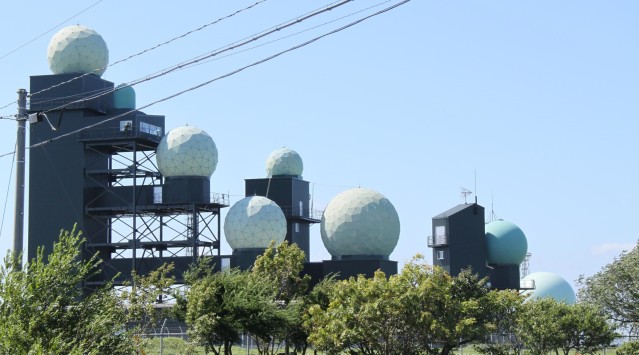
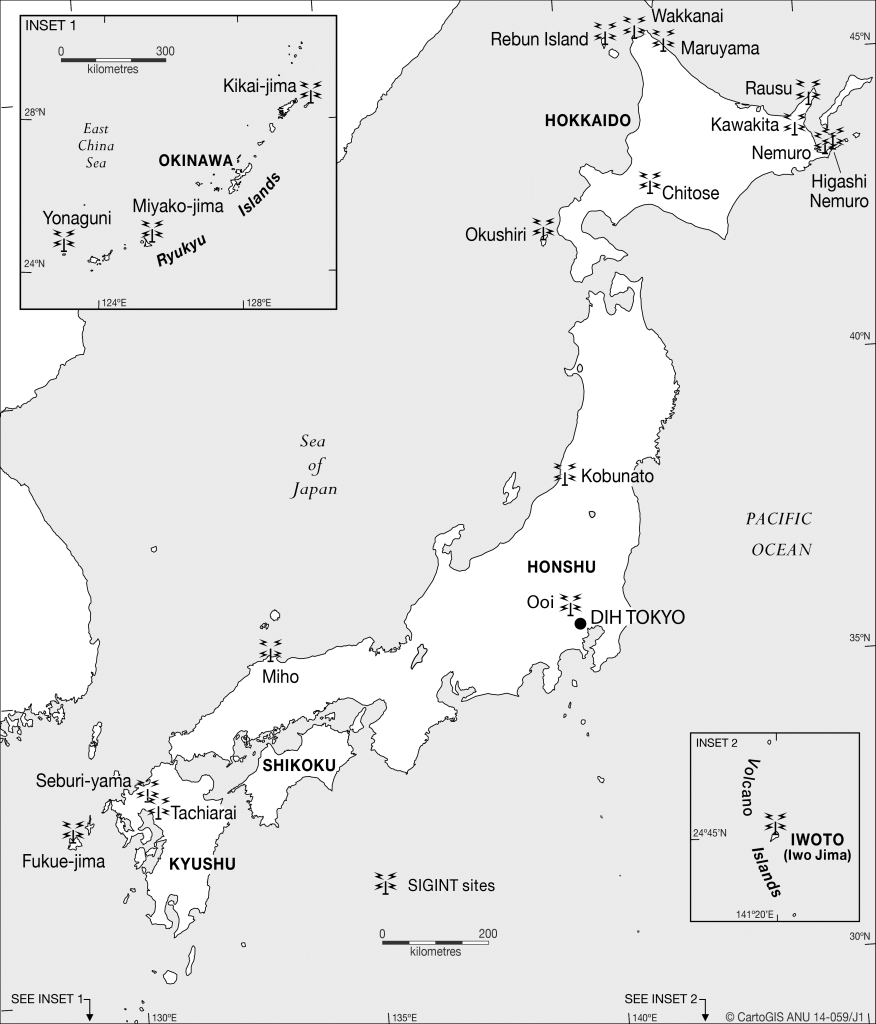

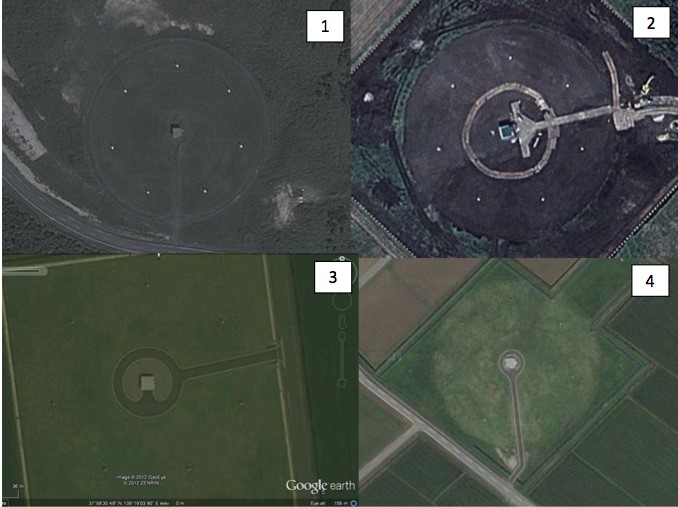
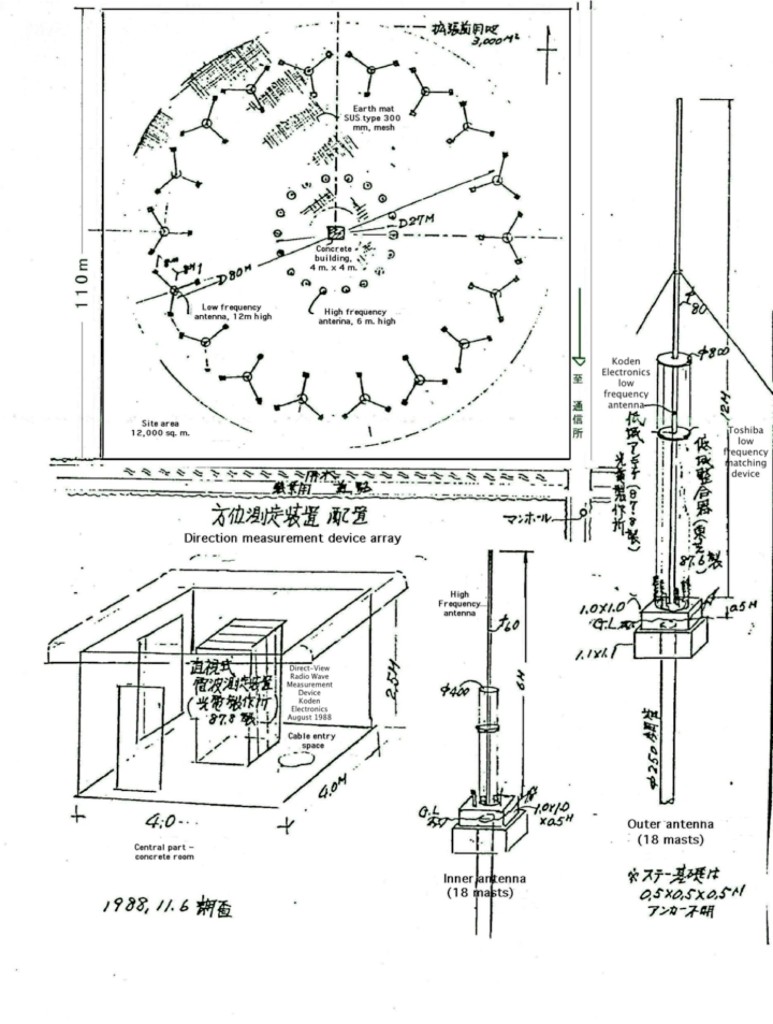
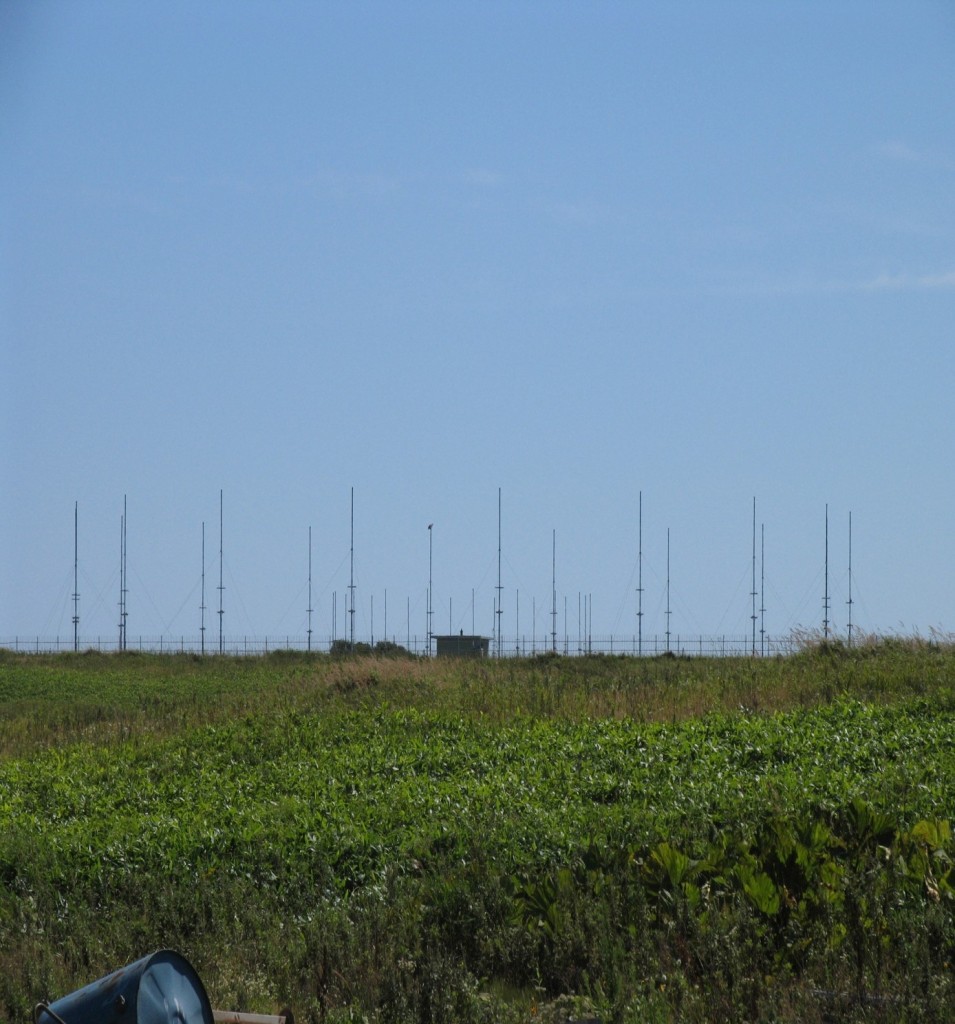
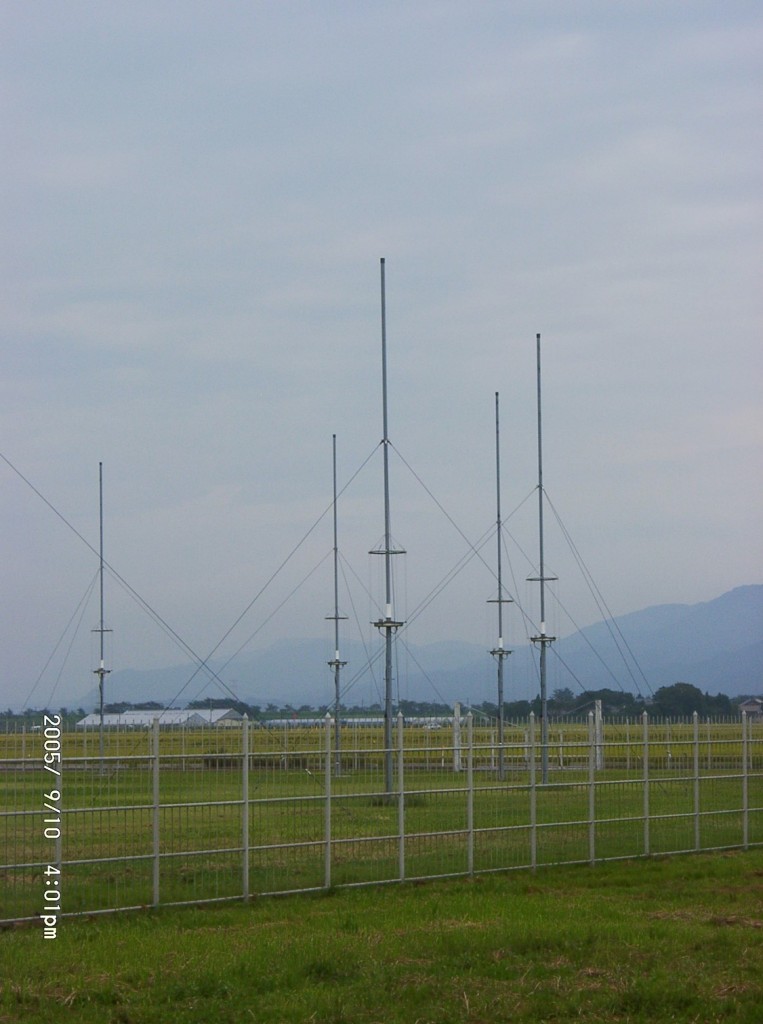
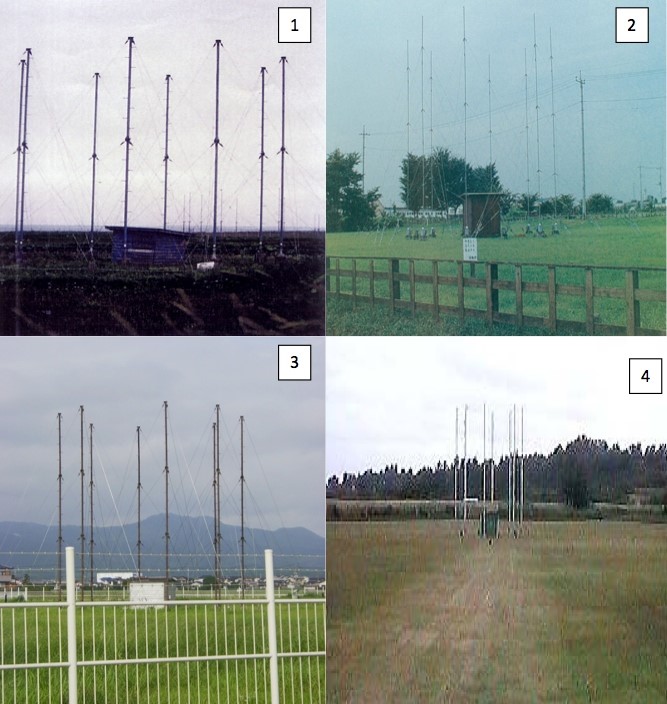
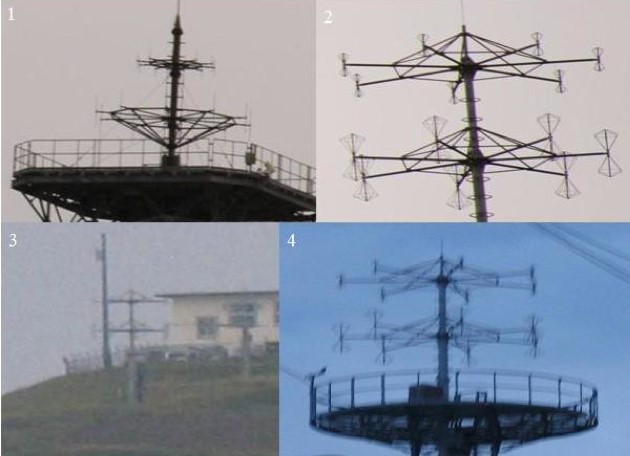
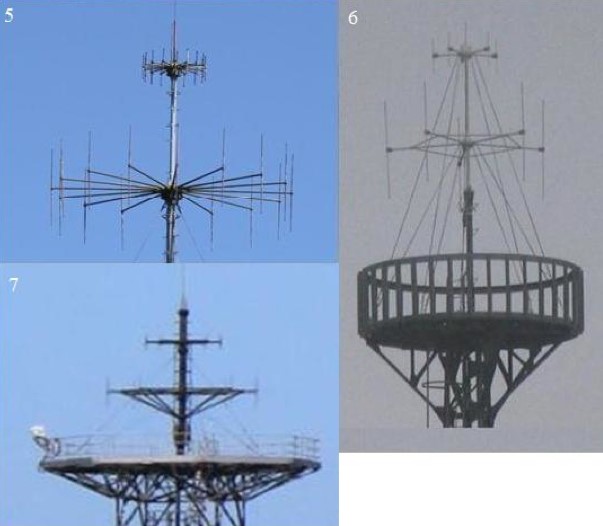
Lots of info. Lots obviously de-classified. I look back on my tour at Wakkanai 1966-67 MAT-M. Took some of the pictures you have shown on other documents. Have quite a few more. Thanks for the memories!